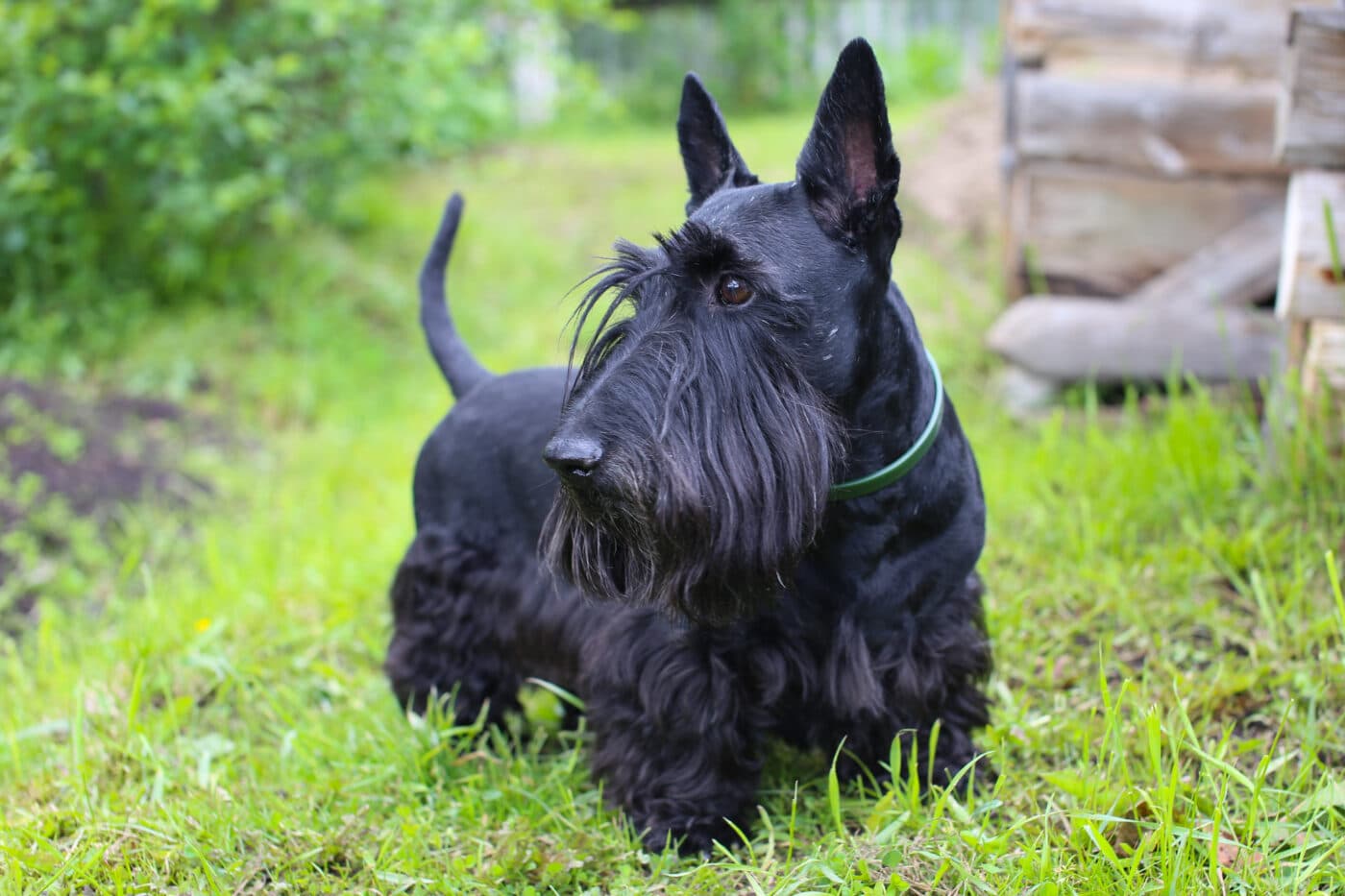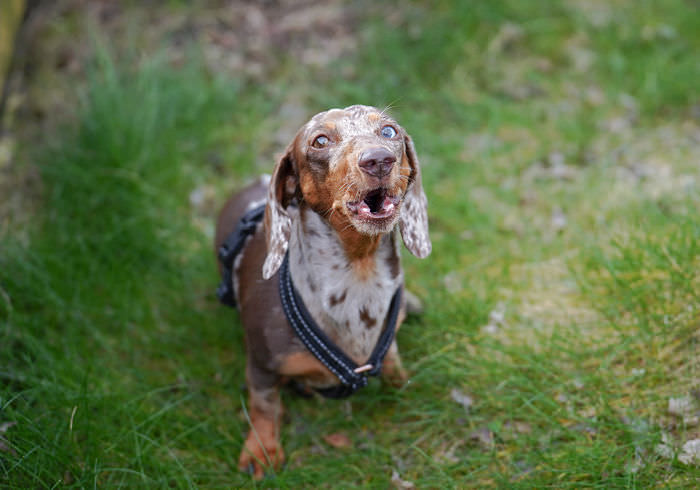Genetic disorders in dogs can significantly impact their quality of life, often causing chronic health issues or shortening their lifespan. These conditions are often inherited due to selective breeding, which can inadvertently pass down traits that lead to genetic abnormalities. While any dog breed can suffer from health problems, certain breeds are more prone to genetic disorders due to their unique physical traits or breed history. Understanding which breeds are at higher risk can help potential owners prepare for the challenges that may come with these dogs.
Bulldog

The Bulldog is one of the most well-known breeds for having numerous genetic disorders. Their distinct flat face and stocky build make them prone to respiratory issues, most notably brachycephalic airway syndrome, which makes it difficult for them to breathe. Bulldogs are also prone to hip dysplasia, a condition where the hip joint does not fit properly, leading to pain and mobility issues. Skin infections are common due to wrinkled skin, which can trap moisture and bacteria. Their unique physical features, while adored by many, come with a host of genetic health problems.
German Shepherd

Unfortunately, German Shepherds, known for their strength, intelligence, and versatility, face several genetic health issues. Hip dysplasia is one of the most common problems in this breed, leading to arthritis and mobility problems as they age. They are also prone to degenerative myelopathy, a progressive disease affecting the spinal cord, which can lead to paralysis. Other genetic disorders include elbow dysplasia and digestive issues such as exocrine pancreatic insufficiency, where the pancreas fails to produce enough enzymes to digest food properly.
Cavalier King Charles Spaniel

The Cavalier King Charles Spaniel is a small breed with a big heart, but unfortunately, that heart is often the source of their genetic health problems. Mitral valve disease, a heart condition where the heart valve deteriorates, is common in this breed and can lead to heart failure. Cavalier King Charles Spaniels are also prone to syringomyelia, a condition where fluid-filled cavities develop within the spinal cord near the brain, causing significant pain and neurological issues. These genetic disorders are prevalent in this breed due to its selective breeding history.
Dachshund

The Dachshund’s distinctive long body and short legs make them highly susceptible to spinal issues, particularly intervertebral disc disease (IVDD). IVDD occurs when the discs between the vertebrae in the spine deteriorate, leading to herniation, which can cause severe pain, nerve damage, and even paralysis. Dachshunds are also prone to patellar luxation, a condition where the kneecap dislocates. Their unique body shape, while charming, contributes to these genetic disorders, making them more vulnerable to back and joint issues as they age.
Boxer

Boxers are known for their energetic personalities and muscular build but are also prone to various genetic health problems. One of the most common issues in Boxers is susceptibility to certain types of cancers, such as lymphoma and mast cell tumors. They are also prone to heart conditions, including arrhythmogenic right ventricular cardiomyopathy (ARVC), which can lead to heart failure. Additionally, Boxers are prone to hip dysplasia and thyroid disorders, making them a breed that requires close monitoring for genetic health issues throughout their lives.
Great Dane

Great Danes are one of the largest dog breeds, and their size makes them prone to genetic disorders. One of the most common issues is gastric dilatation-volvulus (GDV), also known as bloat, where the stomach twists, leading to a life-threatening condition. Great Danes are also susceptible to hip dysplasia and heart problems, particularly dilated cardiomyopathy, which weakens the heart muscle. Their large size also strains their joints, making them prone to arthritis and other orthopedic issues as they age.
Pug

Pugs, like Bulldogs, suffer from brachycephalic airway syndrome due to their flat faces, which makes breathing difficult, especially in hot or humid conditions. They are also prone to eye problems, including corneal ulcers and proptosis, where the eye can pop out of the socket due to trauma or excessive strain. Another common issue in Pugs is obesity, which can exacerbate their breathing problems and put extra strain on their joints. Pugs are also at risk for neurological disorders such as pug dog encephalitis, a fatal brain inflammation with no known cure.
Labrador Retriever

Labrador Retrievers are one of the most popular breeds globally, but they are also prone to several genetic disorders. Hip and elbow dysplasia are common, leading to arthritis and mobility issues as the dog ages. Labradors are also susceptible to progressive retinal atrophy (PRA), which causes gradual vision loss and can lead to blindness. Additionally, Labradors are at risk for exercise-induced collapse (EIC). In this condition, they can suddenly collapse after intense physical activity, making it important for owners to be mindful of their exercise levels.
Scottish Terrier

Scottish Terriers, or Scotties, are a small breed with a big personality, but they are also prone to several genetic disorders. One of the most well-known conditions in this breed is Scottie Cramp, a neurological disorder that affects their coordination and movement, especially during periods of excitement or stress. Scottish Terriers are also prone to bladder cancer, specifically transitional cell carcinoma (TCC), which affects the bladder lining. Additionally, they are at risk for von Willebrand disease, a genetic blood clotting disorder that can cause excessive bleeding during surgery or after an injury.
Shih Tzu

Shih Tzus are small, affectionate dogs, but their genetics often predispose them to various health issues. One of the most common problems in this breed is brachycephalic airway syndrome, which affects their ability to breathe properly due to their flat faces. They are also prone to dental problems due to overcrowded teeth, leading to gum disease and tooth decay. Shih Tzus are also at risk for patellar luxation, a condition where the kneecap dislocates, as well as progressive retinal atrophy (PRA), which can cause blindness over time.
Doberman Pinscher

Doberman Pinschers are known for their strength and loyalty, but they are also genetically predisposed to several health issues. One of the most common problems is dilated cardiomyopathy (DCM), a heart condition that weakens the heart muscle and can lead to heart failure. Dobermans are also prone to von Willebrand disease, a genetic blood clotting disorder that can cause excessive bleeding. Hip dysplasia and cervical vertebral instability, also known as Wobbler’s syndrome, are other common genetic disorders in this breed, affecting their mobility and overall quality of life.
Cocker Spaniel

Cocker Spaniels are prone to a variety of genetic health issues, many of which affect their eyes and ears. This breed commonly has progressive retinal atrophy (PRA), leading to vision loss and eventual blindness. Cocker Spaniels are also susceptible to ear infections due to their long, floppy ears, which can trap moisture and bacteria. They are also at risk for hip dysplasia and autoimmune diseases, such as immune-mediated hemolytic anemia (IMHA), where the immune system attacks the body’s red blood cells, leading to anemia and other health complications.
Bernese Mountain Dog

The Bernese Mountain Dog is a large breed known for its gentle nature, but unfortunately, they are also known for their susceptibility to genetic disorders. Cancer is one of the leading causes of death in this breed, particularly histiocytic sarcoma, a rare and aggressive form of cancer. Bernese Mountain Dogs are also prone to hip and elbow dysplasia, which can cause joint pain and mobility issues. Their large size puts them at risk for bloat, and they are also susceptible to inherited eye disorders such as cataracts and progressive retinal atrophy.
Watch Out for These Genetic Risks

While known for their unique traits and personalities, these beloved dog breeds often face genetic health challenges that require extra attention and care. Many of these disorders result from selective breeding, making it important for potential owners to be aware of and prepared to manage risks. Regular vet check-ups, proactive care, and awareness of their specific health needs can significantly improve their quality of life. Despite their genetic predispositions, with proper care, many of these dogs can still enjoy long, healthy, and happy lives alongside their devoted owners.



